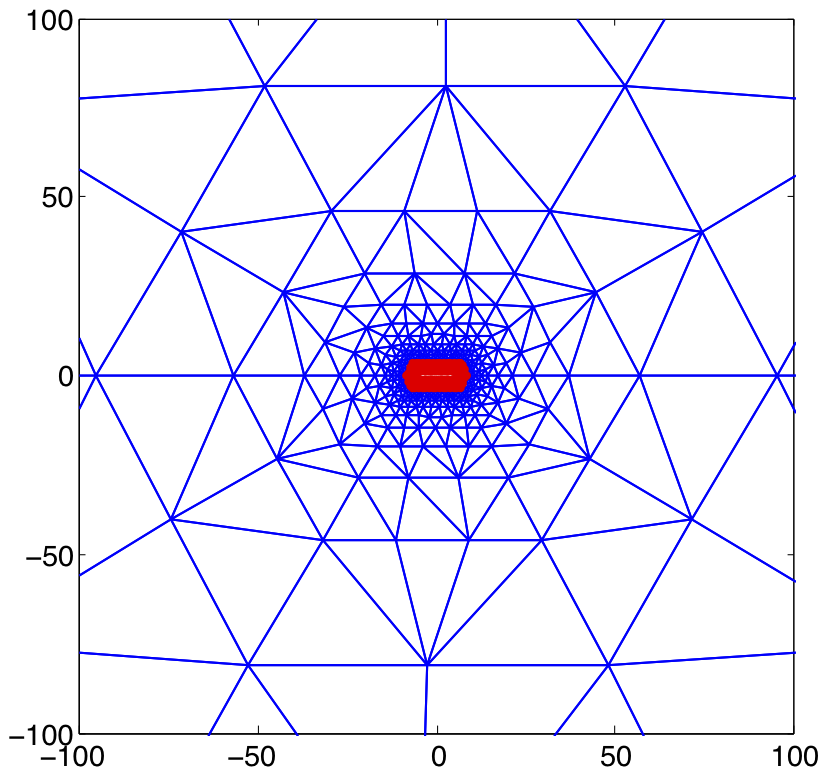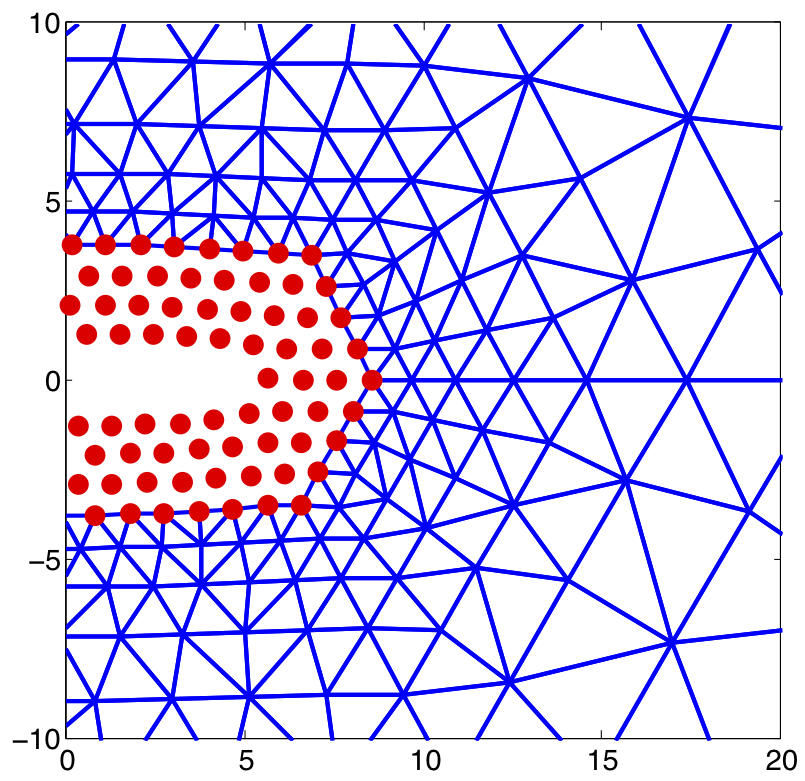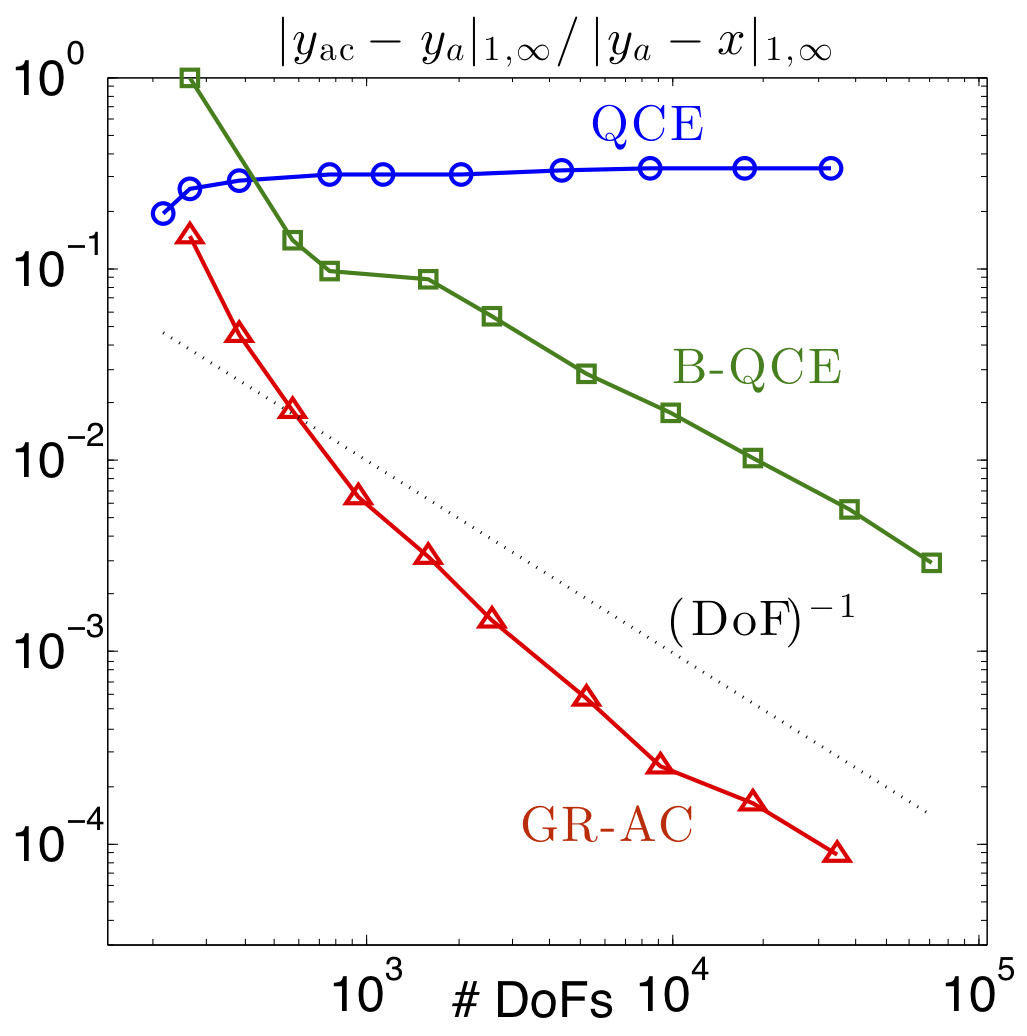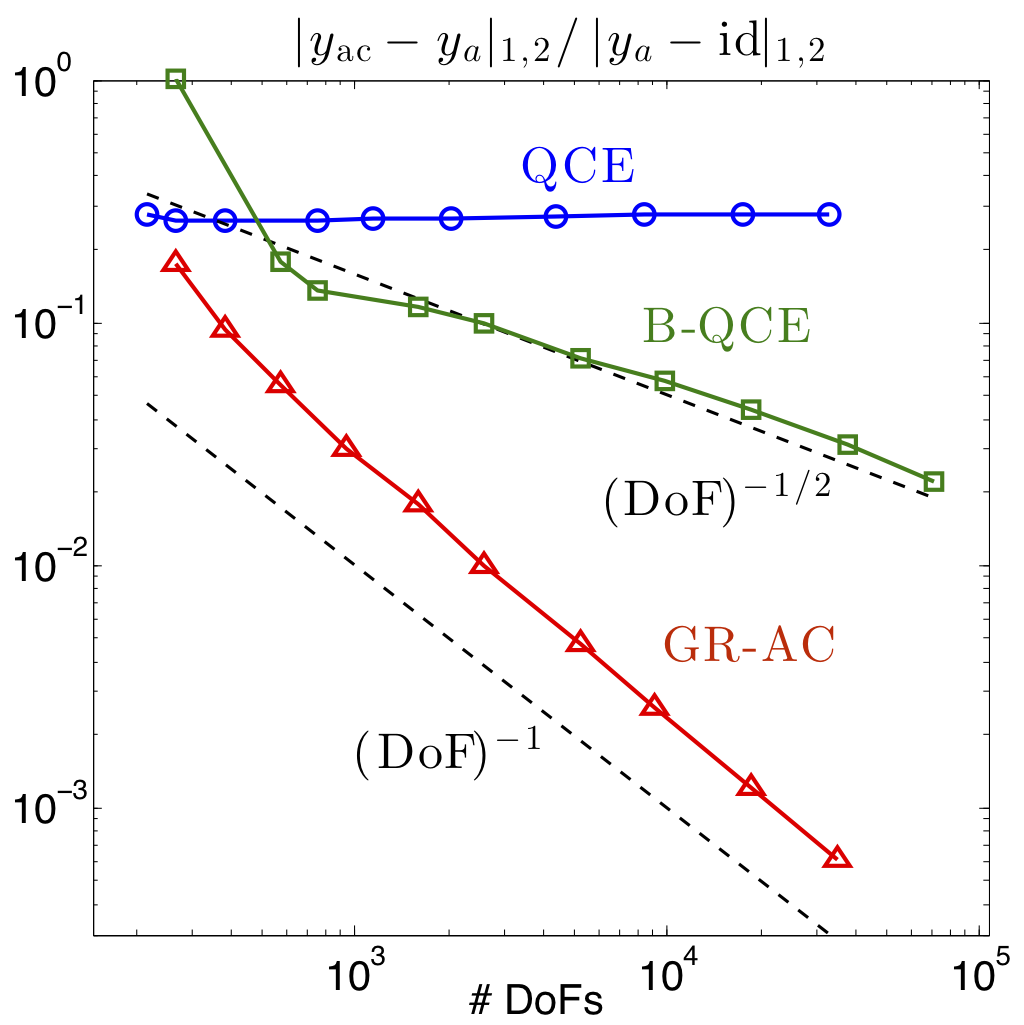My main research interest is coarse graining of atomistic models for solids, in particular the construction and analysis of continuum approximations and of atomistic-to-continuum coupling methods (a/c methods, quasicontinuum methods). The idea of a/c methods is to use computationally expensive atomistic models to describe only those regions of a computational domain that require atomistic accuracy, e.g., the neighbourhood of a crystal defect, and to use a coarse-grained continuum model to describe the elastic fields. At least in principle, this process can yield models with near atomistic accuracy at a significantly reduced computational cost. My focus so far has been on the theoretical foundations of these coarse graining techniques. For representative publications see [45], [48], [53], [54].





Together with my collaborators I have mainly worked on the error analysis of different variants of a/c methods. For example, the above figures show the computation of a micro-crack in a 2D model problem. The error graphs (which are consistent with our theory) show how different a/c methods lead to different convergence rates (including O(1)). This is one of the simplest crystal defects, and much more needs to be done to verify the effectiveness of a/c methods.

I am no longer actively working on A/C methods. This project has now evolved into two new projects on QM/MM Methods and on Boundary Conditions for Defects.